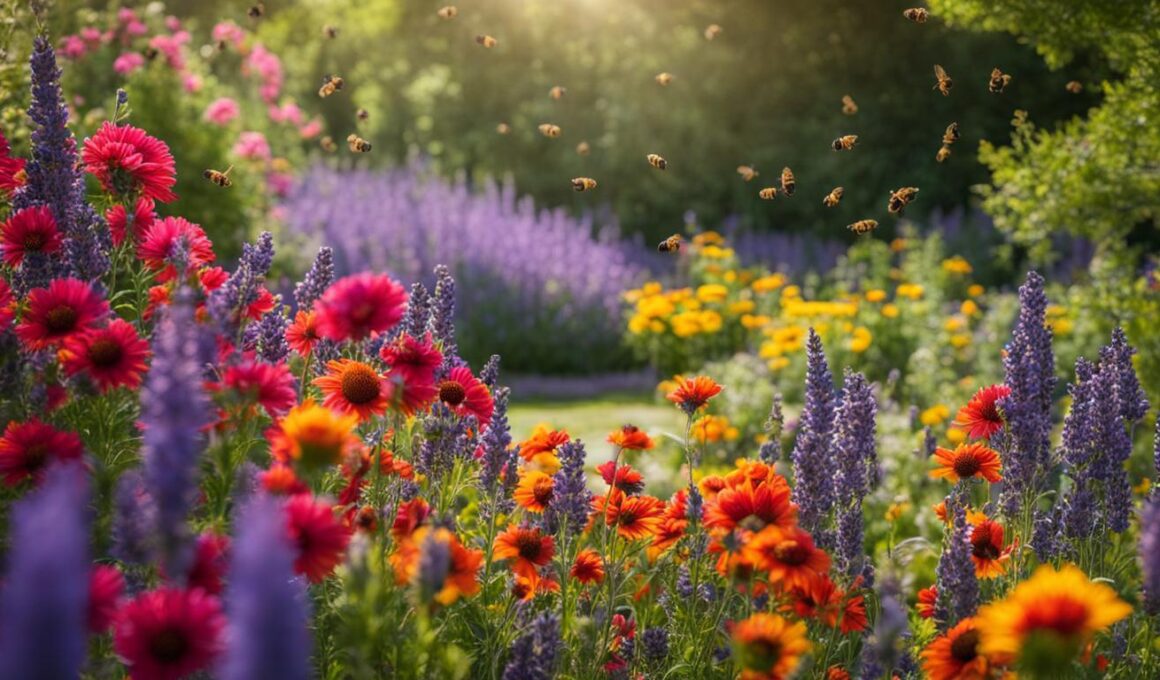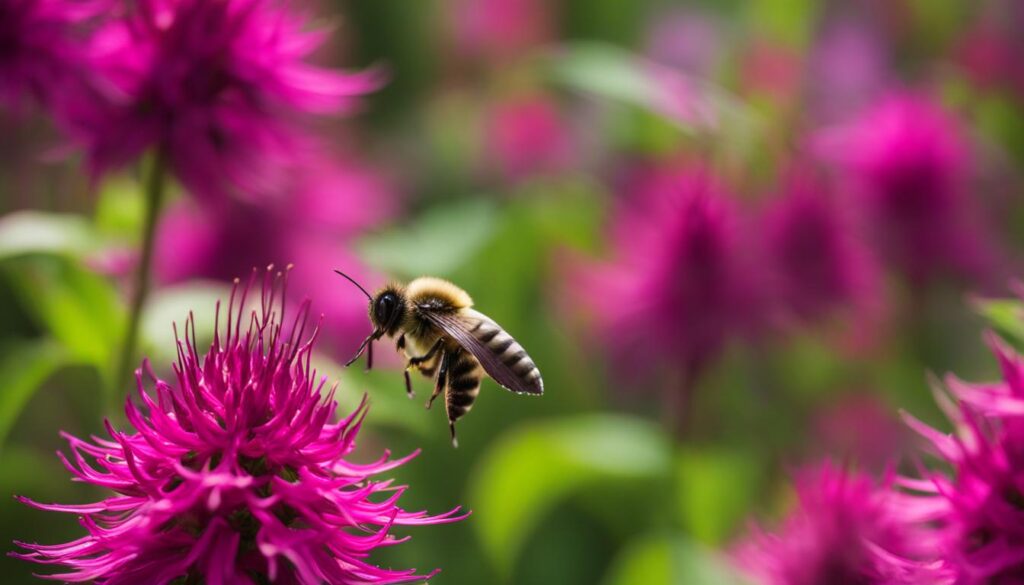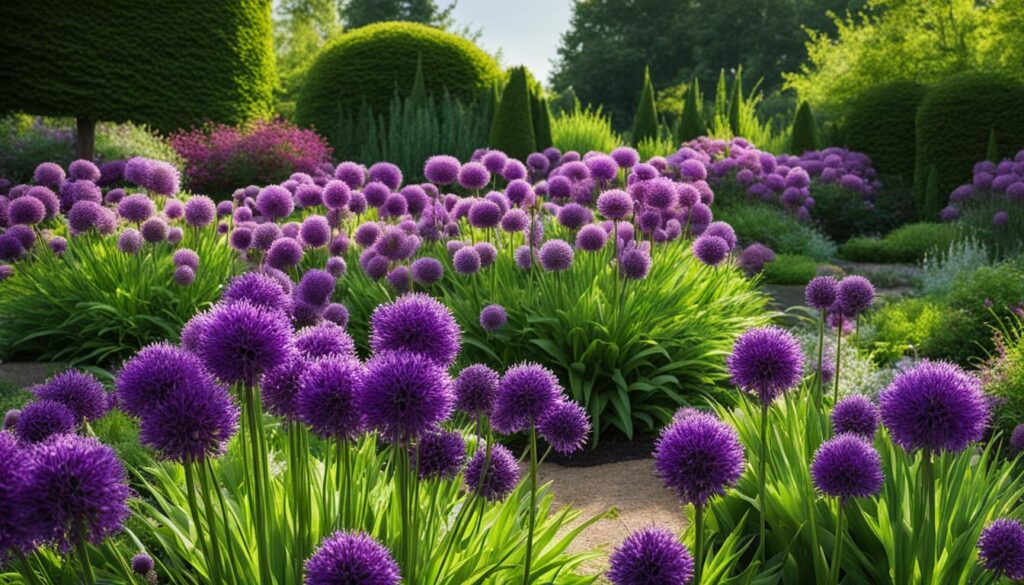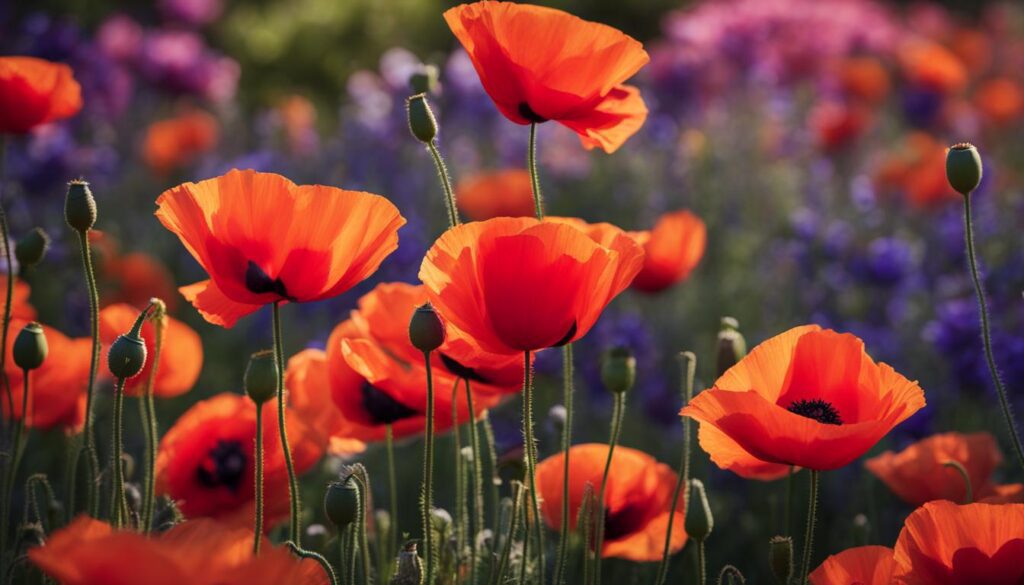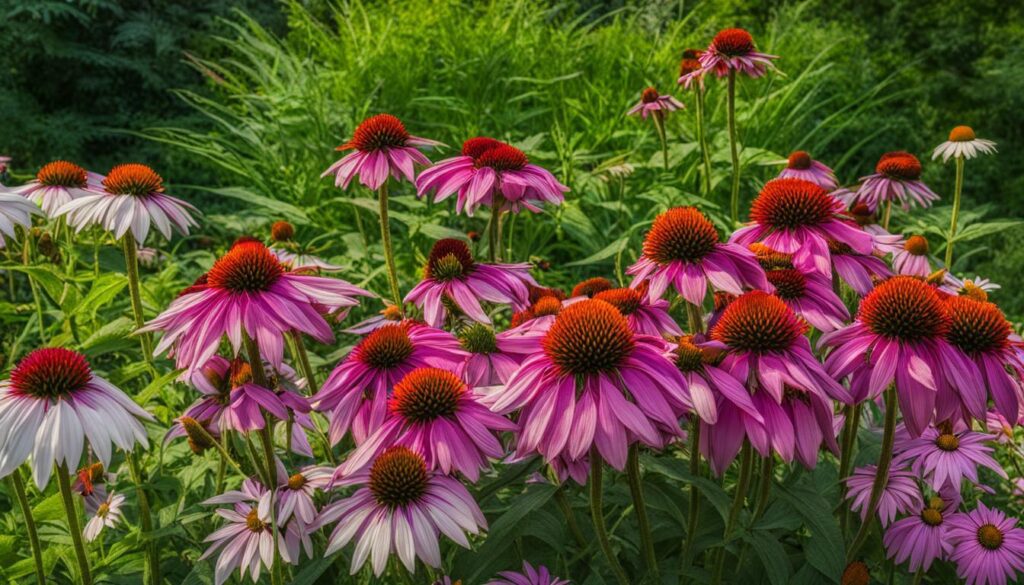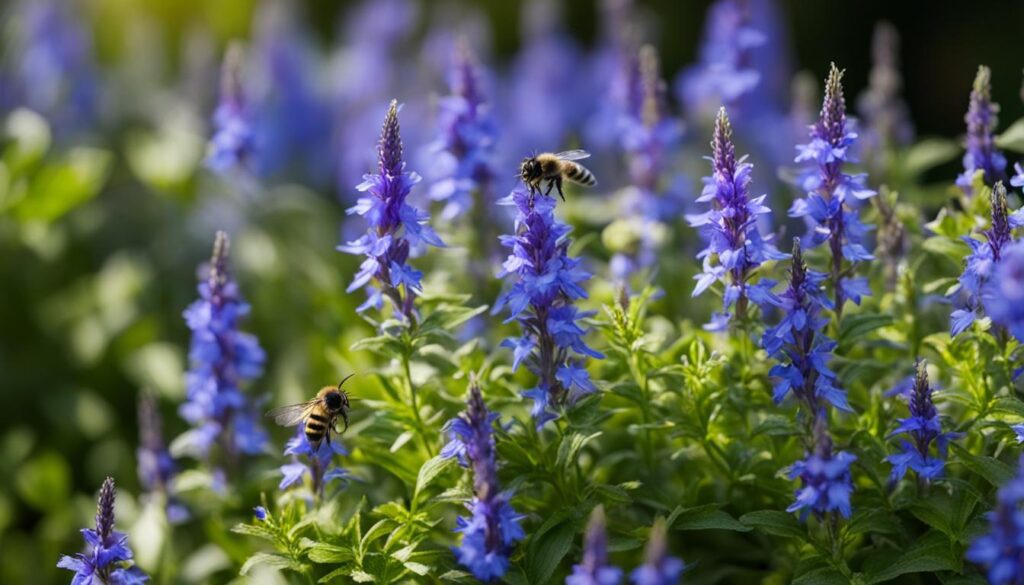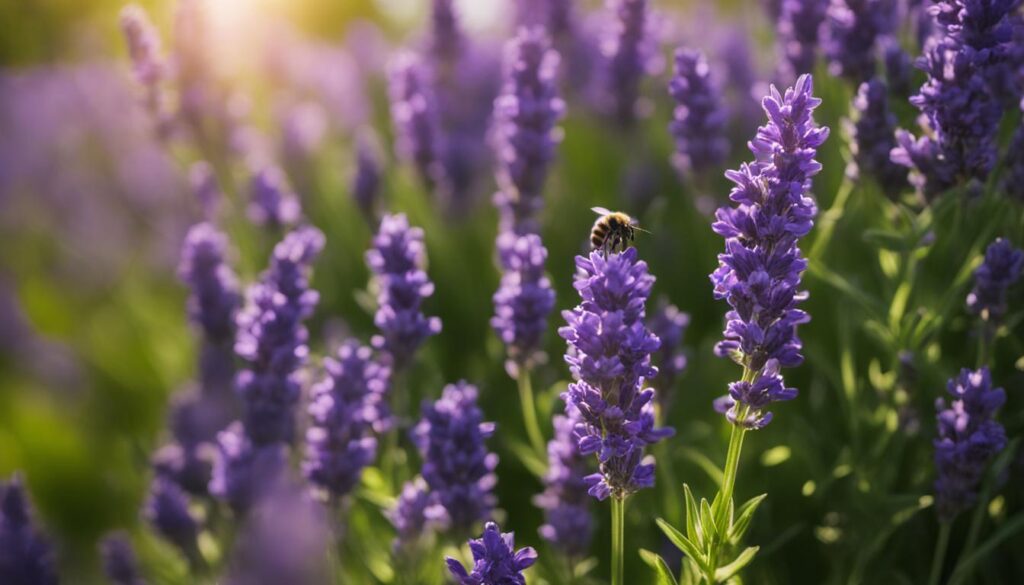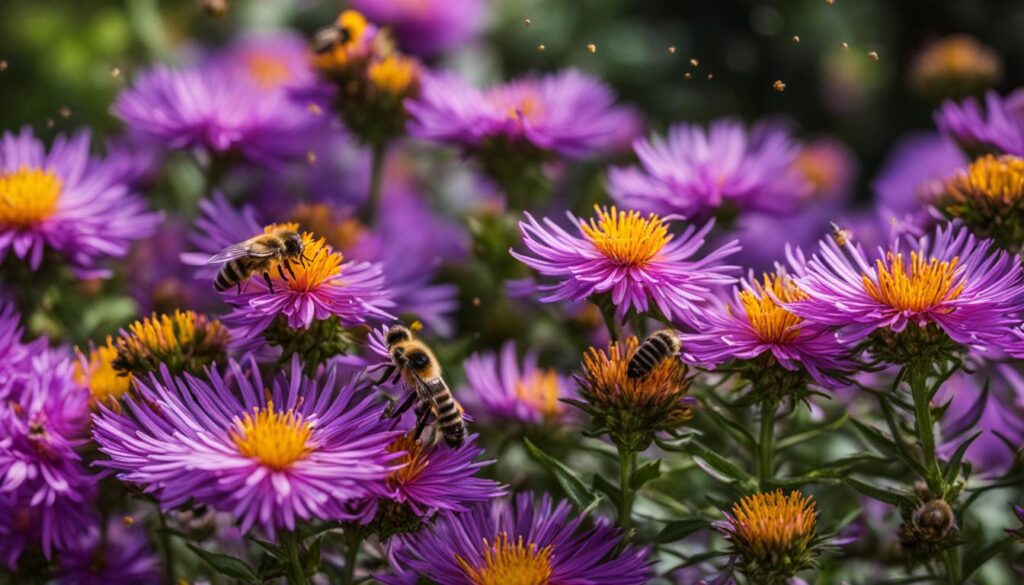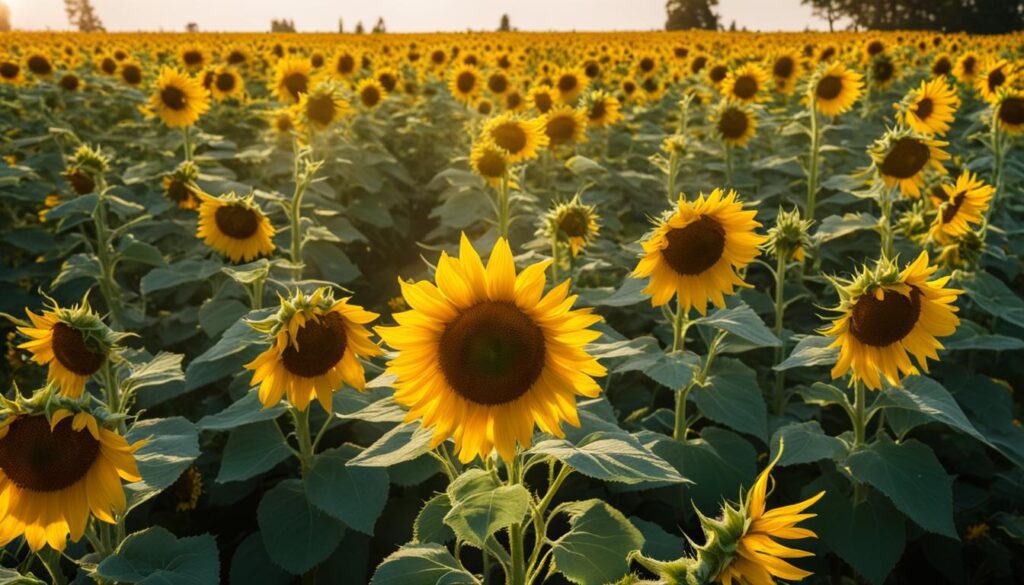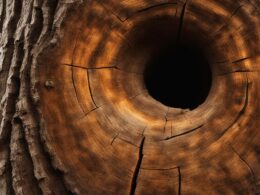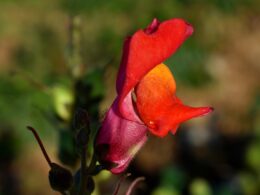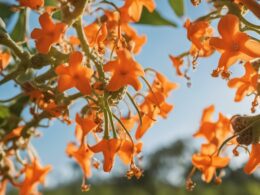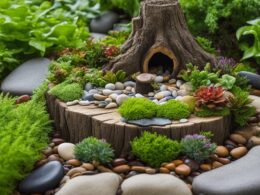Bees are essential pollinators for gardens, and growing bee friendly plants can help support their populations. By providing a diverse variety of flowering plants, you can attract and nourish various species of bees. Planting flowers that have abundant nectar and pollen, are the right color, shape, and size, and are free from pesticides can create a bee-friendly garden environment. Here are some of the best bee friendly plants to consider for your garden.
Key Takeaways:
- Choose a variety of flowering plants that offer abundant nectar and pollen to attract bees.
- Consider planting bee balm, alliums, oriental poppies, coneflowers, lobelias, catmint, lavender, asters, and sunflowers in your garden.
- Ensure the plants you choose are suitable for your specific hardiness zone.
- Avoid using pesticides, as they can be harmful to bees.
- Creating a bee-friendly garden can contribute to the health of bees and the overall well-being of your garden.
By incorporating these bee-friendly plants into your garden, you can create a vibrant and welcoming space for bees while supporting their essential role as pollinators.
Bee Balm (Monarda)
Bee balm, also known as Monarda, is a perennial plant that blooms from midsummer to early fall, making it an excellent choice for attracting bees to your garden. With its dense clusters of small two-lipped flowers, bee balm entices a broad range of pollinators, including various species of bees. The flowers come in shades of red, pink, lavender, white, or purple, adding vibrant colors to your garden.
The plant itself grows 1 to 3 feet tall and is well-suited for zones 3-8. Its aromatic green leaves not only contribute to its bee appeal but also add a delightful fragrance to your garden. By planting bee balm in your garden, you can create a bee-friendly environment while adding visual interest and fragrance to your outdoor space.
Overall, bee balm is a fantastic addition to any garden seeking to attract bees. Its vibrant flowers, enticing scent, and ability to attract various pollinators make it a top choice for bee-friendly planting. Consider adding bee balm to your garden and enjoy the beauty and benefits it brings.
Key Features of Bee Balm (Monarda):
- Plant type: Perennial
- Bloom time: Midsummer to early fall
- Flower color: Red, pink, lavender, white, or purple
- Height: 1 to 3 feet
- Zones: 3-8
- Bee appeal: Attracts a broad range of pollinators, including bees
Alliums
Alliums are a type of bulb plant that can add beauty and attract bees to your garden. These flowering plants are known for their unique globe-shaped blooms, which are composed of small individual flowers. Alliums come in various colors, including purple, pink, blue, and white, making them a vibrant addition to any garden.
Alliums bloom during the spring, typically from May to June, providing a burst of color to your outdoor space. Their tall stalks can reach heights of about 1 to 2 feet, creating an eye-catching display. These plants thrive in zones 4-8, making them suitable for many regions.
What makes alliums particularly appealing to bees is their captivating flower structure. The round clusters of blooms, often referred to as drumsticks or pom-poms, are highly attractive to bees. These pollinators are drawn to alliums, making them a valuable addition to any garden seeking to support bee populations.
Alliums at a Glance:
- Plant type: Bulb plant
- Bloom time: May to June
- Flower color: Shades of purple, pink, blue, and white
- Height: 1 to 2 feet
- Zones: 4-8
- Bee appeal: Attracts various species of bees
“The vibrant blooms of alliums not only add beauty to your garden but also attract a variety of bees with their unique flower structure.”
Oriental Poppies (Papaver orientale)
If you’re looking to attract bees to your garden, oriental poppies are an excellent choice. These perennial plants, scientifically known as Papaver orientale, bloom in June to July, adding vibrant colors to your outdoor space. Oriental poppies come in shades of orange, red, lavender, or pink, often with dark purple or black centers, creating a visually stunning display.
Bees are particularly drawn to oriental poppies because of their protein-rich pollen. These cup-shaped blooms produce an abundance of pollen, making them a favorite among bees. By planting oriental poppies in your garden, you’ll not only enhance its beauty but also provide a valuable food source for these pollinators.
Oriental poppies typically grow 2 to 4 feet tall, adding height and structure to your garden beds. They thrive in zones 5-7, making them suitable for a wide range of climates. With their striking flowers, bee appeal, and easy-to-grow nature, oriental poppies are a must-have for any bee-friendly garden.
Key Features of Oriental Poppies:
- Scientific Name: Papaver orientale
- Plant Type: Perennial
- Bloom Time: June to July
- Flower Color: Orange, red, lavender, pink
- Height: 2 to 4 feet
- Zones: 5-7
- Bee Appeal: High
Bee Friendly Plants: Coneflowers (Echinacea)
If you’re looking to attract bees to your garden, consider planting coneflowers (Echinacea). These beautiful and vibrant flowers are not only a feast for the eyes but also a haven for bees. Coneflowers bloom from midsummer to fall, providing a long-lasting source of nectar and pollen for our buzzing friends.
Coneflowers come in a variety of colors, including purple, white, yellow, orange, and pink. Their daisy-like appearance and prominent central cones make them irresistible to bees. These flowers are often swarmed by bees, as each floret offers a sweet reward. The height of coneflowers can range from 2 to 5 feet, making them a standout feature in any garden.
Why Bees Love Coneflowers
The appeal of coneflowers to bees lies in their abundant nectar and pollen production. Bees are drawn to the vibrant colors and the shape of the flowers, which provide easy access to their food sources. The long bloom time of coneflowers ensures that bees have a steady supply of nourishment throughout the late summer and fall seasons.
Coneflowers are a favorite among both honeybees and native bee species, thanks to their rich nectar and pollen reserves. That’s why planting coneflowers in your garden is a surefire way to support your local bee populations.
When selecting coneflowers for your garden, consider their requirements. They are adaptable plants that thrive in a wide range of zones (3-9) and prefer well-draining soil and full sun. Coneflowers are also known for their natural resistance to pests and diseases, making them a low-maintenance addition to your bee-friendly garden.
By incorporating coneflowers into your garden, you not only create a stunning display of color but also provide a valuable food source for bees. These hardy and bee-friendly plants are sure to bring life and vibrancy to your outdoor space while supporting these essential pollinators.
Bee-Friendly Plants: Lobelias
If you’re looking to attract bees to your garden, consider planting lobelias. These perennial plants bloom from August through September, displaying stunning spikes of blue to purple flowers. With their vibrant colors and abundance of nectar, lobelias are irresistible to bumblebees and other bee species.
Lobelias typically reach a height of 2 to 3 feet, making them a great choice for adding variety to your garden’s landscape. They thrive in zones 4-9, so be sure to check your specific region’s planting zone to ensure optimal growth.
Incorporating lobelias into your garden not only benefits bees but also adds visual appeal with their striking blooms. Create a bee-friendly oasis by pairing lobelias with other bee-attracting flowers like bee balm, alliums, and coneflowers. Your garden will come alive with the buzzing sound of happy bees and the vibrant colors of these beautiful blooms.
Key Features of Lobelias:
- Plant Type: Perennial
- Bloom Time: August to September
- Flower Color: Blue to Purple
- Height: 2 to 3 feet
- Zones: 4-9
- Bee Appeal: Highly attractive to bumblebees and other bee species
So, why not invite these delightful pollinators into your garden by adding lobelias to your collection of bee-friendly plants? You’ll not only create a haven for bees but also enjoy the beauty and tranquility of a buzzing garden.
Bee-Friendly Plants: Catmint (Nepeta)
When it comes to attracting bees to your garden, catmint (Nepeta) is a top contender. This perennial plant boasts beautiful blue to purple flowers that bloom from May through September, providing a long-lasting source of nectar for honeybees and bumblebees.
The plant type of catmint is an herb, and it can reach heights ranging from 9 inches to 3 feet. Catmint is well-suited for zones 4-9, making it a versatile option for many gardeners across the United States.
What makes catmint so appealing to bees is its abundant nectar production and enticing flower color. The vibrant blue to purple blooms act as a beacon, attracting bees from near and far to feast on the sweet nectar. By incorporating catmint into your garden, you’ll be creating an irresistible haven for these essential pollinators.
Lavender
Lavender is a perennial herb that not only adds beauty to your garden but also serves as a magnet for bees. With its stunning lavender-purple, pink, and white flowers, lavender attracts bees with its delightful fragrance and abundance of nectar. Growing up to 3 feet tall, this plant thrives in zones 5-9, making it suitable for a variety of climates.
Bees are naturally drawn to lavender due to the size of its tiny flowers, which are the perfect size for honeybees to access easily. The nectar-rich blooms provide a valuable food source for bees and contribute to pollination. By planting lavender in your garden, you can create an inviting space that supports bee populations and enhances the overall health of your garden ecosystem.
Not only is lavender beneficial for bees, but it also offers numerous benefits for gardeners. Its aromatic foliage can repel pests like mosquitoes and moths, making it a natural insect deterrent. Additionally, lavender flowers can be harvested and used for various purposes, such as crafting lavender sachets or infusing into oils and teas.
The Benefits of Lavender for Bees
- Attracts bees with its delightful fragrance
- Provides a rich source of nectar for honeybees
- Contributes to pollination in the garden
- Repels pests like mosquitoes and moths
- Offers versatility for crafting and culinary uses
Plant lavender in your garden to create an inviting haven for bees and enjoy the beauty and benefits it brings. With its attractive flowers and alluring fragrance, lavender is a perfect addition to any bee-friendly garden.
Attract Bees to Your Garden with Beautiful Asters
If you’re looking to attract bees to your garden, asters are a fantastic choice. These perennial plants bloom from August to October, providing vital late-season nectar sources for native bees. With their deep purple flowers and pale yellow centers, asters create a stunning display in any garden.
Asters can grow from 3 to 5 feet tall, making them an eye-catching addition to your landscape. They thrive in zones 3-7, so they’re adaptable to various climates. If you want to create a bee-friendly garden, planting asters is a great way to support bee populations and promote pollination.
In addition to their bee appeal, asters are low-maintenance plants that can tolerate different soil conditions. They prefer full sun but can also tolerate partial shade. Asters are known for their resilience, making them an excellent choice for beginner and experienced gardeners alike.
Whether you’re creating a wildflower garden or enhancing your existing flower beds, asters are a perfect choice. Their vibrant colors, late-season bloom time, and bee-attracting qualities make them a valuable addition to any bee-friendly garden.
Sunflowers: A Bee-Friendly Plant for Your Garden
When it comes to attracting bees to your garden, few plants are as captivating as sunflowers. With their vibrant yellow petals and towering height, sunflowers not only brighten up your outdoor space but also provide a bountiful feast for bees.
Sunflowers are a type of plant that can be either annual or perennial, depending on the variety. They bloom from summer through fall, showering your garden with beautiful yellow flowers that bees find irresistible. These plants can grow up to an impressive 16 feet tall, creating a stunning focal point in your landscape.
The color, size, and shape of sunflower blooms are specifically tailored to attract bees. The bright yellow petals act as a visual beacon, signaling to bees that nectar and pollen are plentiful. The large central disk, or the “face” of the sunflower, is loaded with individual florets, each offering a sweet reward for bees in the form of nectar and a protein-rich pollen source.
When planting sunflowers, choose a variety that thrives in your specific hardiness zone. Perennial varieties are suitable for zones 4-8 and can provide years of bee-friendly blooms. By adding sunflowers to your garden, you not only create an enchanting display of color but also contribute to the well-being of bees and the overall health of your garden ecosystem.
Conclusion
Creating a bee-friendly garden is essential to support bee populations and promote pollination in your garden. By planting a diverse variety of bee-friendly plants, you can attract and nourish different species of bees, contributing to their well-being and the overall health of your garden.
It’s important to choose flowers that offer abundant nectar and pollen, as well as the right color, shape, and size to attract bees. Avoid using pesticides, as they can be harmful to bees and other pollinators. By adopting bee-friendly practices and maintaining a balanced garden ecosystem, you can create a welcoming environment for bees.
Remember to choose the best bee-friendly plants for your garden, such as bee balm, alliums, oriental poppies, coneflowers, lobelias, catmint, lavender, asters, and sunflowers. These plants provide a rich source of nectar and pollen, and their vibrant colors and shapes are irresistible to bees. Incorporating these plants into your garden will not only benefit bees but also enhance the beauty and vitality of your outdoor space.
Can Bee Friendly Plants also Benefit Tomatoes in the Garden?
Yes, bee-friendly plants can benefit both determinate and indeterminate tomatoes in the garden. By attracting bees, these plants can enhance pollination, leading to better fruit development and higher yields. Some bee-friendly plants to consider adding to your determinate and indeterminate tomatoes list include lavender, sunflowers, and borage.
FAQ
What are bee friendly plants?
Bee friendly plants are flowering plants that provide abundant nectar and pollen, are the right color, shape, and size, and are free from pesticides. These plants attract and nourish bees, supporting their populations and promoting pollination.
Why are bees important for gardens?
Bees are essential pollinators for gardens. They help transfer pollen from the male parts of flowers to the female parts, allowing plants to reproduce. This process is crucial for the growth and production of fruits, vegetables, and seeds.
How can I attract bees to my garden?
You can attract bees to your garden by planting a diverse variety of bee friendly plants. Choose flowers that have abundant nectar and pollen, are the right color, shape, and size, and are free from pesticides. By providing an enticing environment, you can attract and nourish different species of bees.
What are some of the best bee friendly plants to consider?
Some of the best bee friendly plants to consider for your garden include bee balm, alliums, oriental poppies, coneflowers, lobelias, catmint, lavender, asters, and sunflowers. These plants have attractive flowers that provide ample nectar and pollen for bees.
What is the bloom time and height of bee balm?
Bee balm blooms from midsummer to early fall and grows 1 to 3 feet tall.
What is the bloom time and height of alliums?
Alliums bloom from May to June and are about 1 to 2 feet tall.
What is the bloom time and height of oriental poppies?
Oriental poppies bloom in June to July and grow 2 to 4 feet tall.
What is the bloom time and height of coneflowers?
Coneflowers bloom from midsummer to fall and grow 2 to 5 feet tall.
What is the bloom time and height of lobelias?
Lobelias bloom from August through September and are 2 to 3 feet tall.
What is the bloom time and height of catmint?
Catmint blooms from May through September and can grow from 9 inches to 3 feet tall.
What is the bloom time and height of lavender?
Lavender blooms from June through August and grows 2 to 3 feet tall.
What is the bloom time and height of asters?
Asters bloom from August to October and can grow 3 to 5 feet tall.
What is the bloom time and height of sunflowers?
Sunflowers can bloom from summer through fall and can grow up to 16 feet tall (perennial varieties).
How can I create a bee-friendly garden?
To create a bee-friendly garden, plant a diverse variety of bee friendly plants, provide abundant nectar and pollen, choose the right color, shape, and size of flowers, and avoid using pesticides. By adopting bee-friendly practices and maintaining a balanced garden ecosystem, you can support bee populations and promote pollination.





